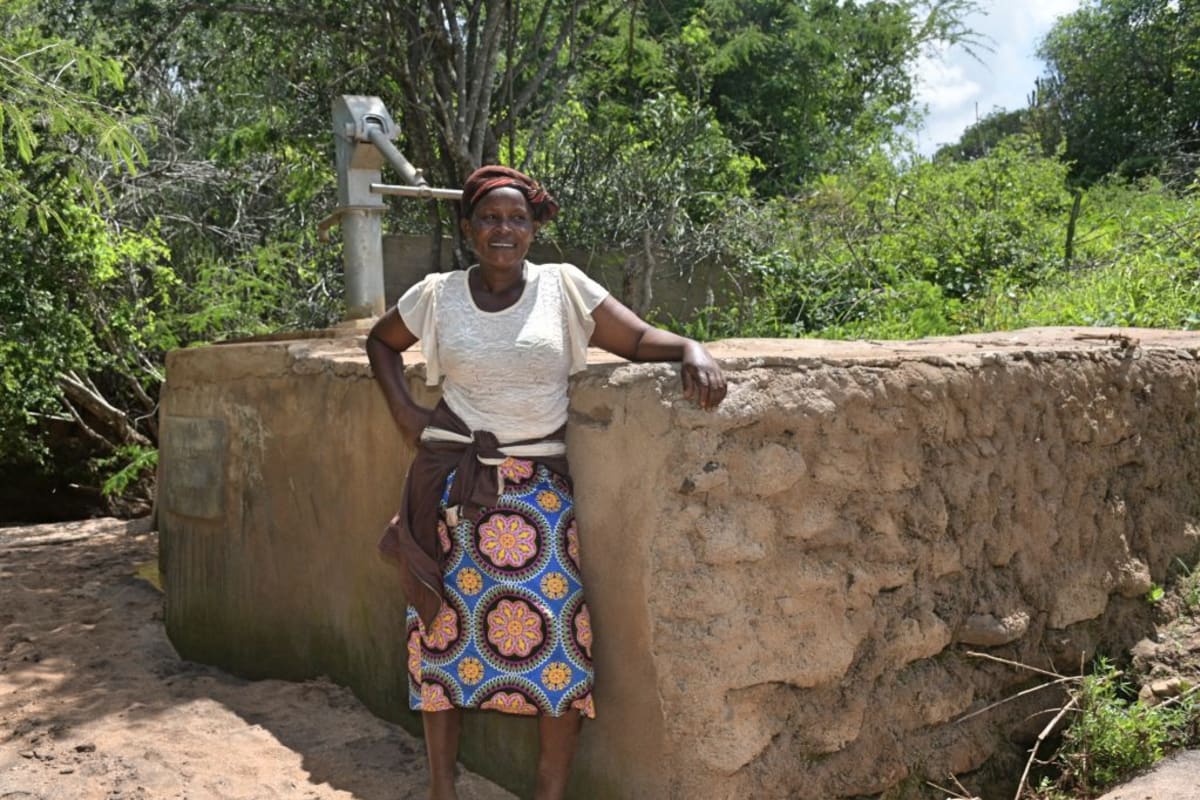Kangalu Community is found in a semi-vegetated, peaceful, and rural locality of Southeastern Kenya. Most people here live in houses made of bricks that are well roofed with iron sheets. However, a majority of the homes lack cemented floors and plastered walls. The most common livelihoods in this community are either farming or working casual labor jobs, such as construction or motorcycle taxi driving.
Our main entry point into Kangalu has been the Kangalu Chanuka Self-Help Group, which is comprised of households that are working together to address water and food scarcity in their region. These members are our hands and feet in both constructing water projects and spreading the message of good hygiene and sanitation to everyone in the area.
We completed our first project with this group last year, but that water point alone is not enough for this community.
"My village faces the challenge of a lack of adequate clean water sources. This has led to us waking up early in the morning at times to reach the few available water sources," said Josephine Kilonzi, a member of the self-help group.
"The need to end the challenges brought us together to work jointly and implement many water points."
We typically work with self-help groups for 3 to 5 years on multiple water projects to ensure that everyone in their community has access to water. For this community of more than 600 people and their neighbors, a series of dams and wells are needed to address water access issues here.
"We are very happy to be working with you. Our community lacks adequate water access all year round which leads to poor hygiene, underdevelopment, and malnutrition. That is why we remain committed to working together on more water projects aimed at bringing water to the doorstep of everyone and leading to general improvements in living standards for all," said Felisters Mumbe, another member of the self-help group.
We are continuing to work with this group on a new project.
What We Can Do:
Sand Dam
Building this sand dam at a spot further down the river will bring water closer to hundreds of other people. After the community picked the spot, our technical team went in and proved the viability by finding a good foundation of bedrock. Now, our engineers are busy drawing up the blueprints. We estimate the dam will be 30 meters long and 3 meters high.
We are unified with this community to address the water shortage. As more sand dams are built, the environment will continue to transform. As the sand dams mature and build up more sand, the water tables will rise. Along with these sand dams, a hand-dug well will be installed to give community members an easy, safe way to access that water.
With these projects, clean water will be brought closer to hundreds of people living here.
Training
These community members currently do their best to practice good hygiene and sanitation, but their severe lack of water has been a big hindrance to reaching their fullest potential.
We will hold hygiene and sanitation training sessions with the Kangalu Chanuka Self-Help Group and other community members to teach about important hygiene practices and daily habits to establish at the personal, household, and community levels. This training will help to ensure that participants have the knowledge they need to make the most out of their new water point as soon as the water is flowing.
One of the most important topics we plan to cover is the handling, storage, and treatment of water. Having a clean water source will be extremely helpful, but it is useless if water gets contaminated by the time it is consumed. We will also emphasize the importance of handwashing.
We and the community strongly believe that all of these components will work together to improve living standards here, which will help to unlock the potential for these community members to live better, healthier lives.
We typically work with self-help groups for 3 to 5 years on multiple water projects. We will conduct follow-up visits and refresher trainings during this period and remain in contact with the group after all of the projects are completed to support their efforts to improve sanitation and hygiene.

 Sand Dam
Sand Dam
 Rehabilitation Project
Rehabilitation Project
































